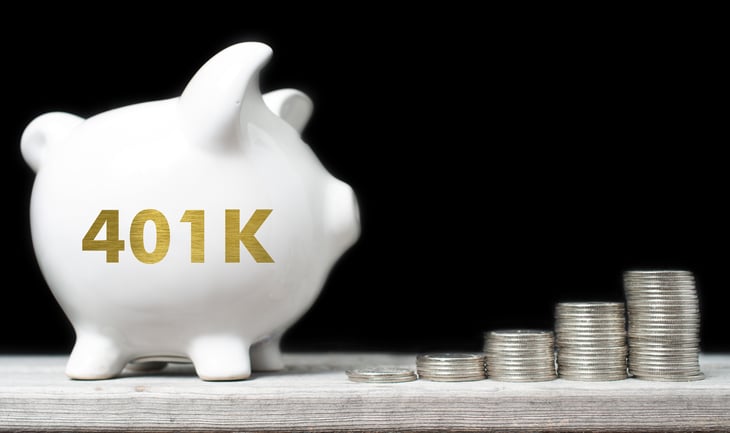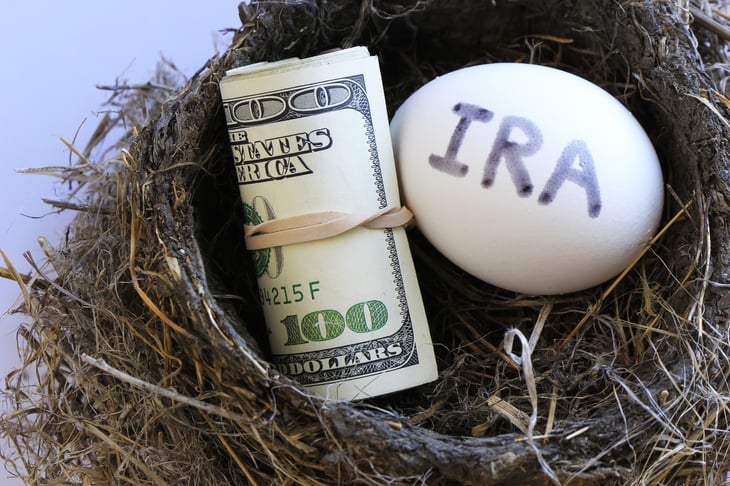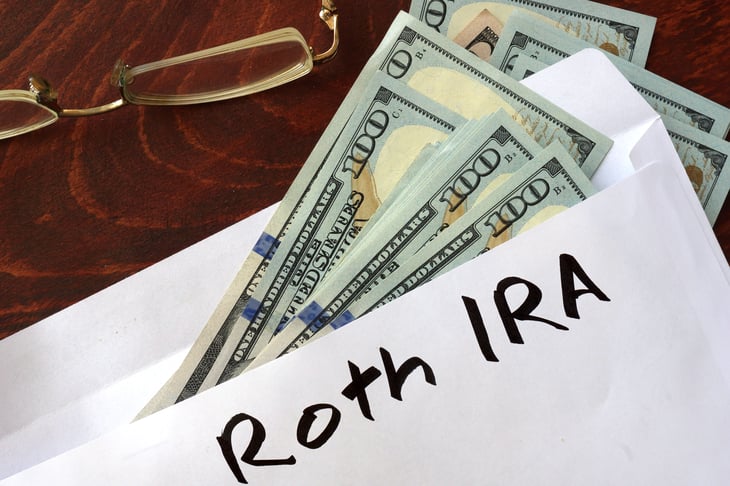
Editor's Note: This story originally appeared on Personal Capital.
401(k) plans, IRAs and other tax-advantaged retirement savings accounts are common ways to save for retirement, and millions of Americans pour money into them every year.
It’s generally wise to avoid withdrawing money from your 401(k), as there are often hefty penalties and taxes to consider for early withdrawals.
Sometimes, however, unplanned circumstances force people to withdraw funds from their 401(k) early. So if you find yourself in a place where you need to tap your retirement funds early, here are some rules to be aware of and some options to consider.
401(k) Withdrawal Rules

If you need to pull out money early, keep in mind these important rules around early withdrawals.
Generally, if you take a distribution from an IRA or 401(k) before age 59 ½, you will likely owe both federal income tax (taxed at your marginal tax rate) and a 10% penalty on the amount that you withdraw, in addition to any relevant state income tax. That tends to add up.
Given these consequences, withdrawing from a 401(k) or IRA early is usually not ideal.
Coronavirus-Related 401(k) and IRA Withdrawal Rules

As a response to COVID-19 pandemic economic hardships, the CARES Act provided special withdrawal allowances for retirement savers in 2020. The early withdrawal penalty of 10% is back in 2021. Income on withdrawals will count as income for the 2021 tax year.
However, the COVID-Related Tax Relief Act of 2020, passed in December, allows for relief to retirement plan withdrawals made because of qualified disasters. To qualify, taxpayers must have lived in a qualified disaster area and suffered financial loss because of that disaster.
In 2020, retirement savers could temporarily:
- Make penalty-free withdrawals from certain retirement plans for coronavirus-related expenses.
- Pay the associated tax over three years.
- Recontribute withdrawn funds.
You can compare numerous retirement scenarios with Personal Capital’s free Retirement Planner. Millions of people use this financial tool to see if they’re on track, and what they can do to improve their chances of retirement success.
The Costs of Early 401(k) Withdrawals

Early withdrawals from an IRA or 401(k) account can be an expensive proposition because of the hefty penalties they carry under many circumstances.
The IRS allows penalty-free withdrawals from retirement accounts after age 59 ½ and requires withdrawals after age 72 (these are called required minimum distributions, or RMDs). There are some exceptions to these rules for 401(k)s and other qualified plans.
Try to think of your retirement savings accounts like a pension. People working towards a pension tend to forget about it until they retire. There is no way they can access it before retirement.
While that money is locked up until later in life, it becomes a hugely powerful resource in retirement. The 401(k) can be a boon to your retirement plan. It gives you the flexibility to change jobs without losing your savings. But that all starts to fall apart if you use it like a bank account in the years preceding retirement. Your best bet is usually to consciously avoid tapping any retirement money until you’ve at least reached the age of 59 ½.
Sometimes, there are circumstances when it’s difficult to avoid tapping into retirement accounts — 10% penalty or no. But before you pay the penalty, be aware that there are several circumstances under which the IRS grants exceptions to the 10% penalty rule.
These exceptions may make it possible for you to tap your retirement savings in a time of need without having to pay the IRS the extra penalty for the privilege. They require some planning and care to implement, so it’s best to be aware of them before the need actually arises.
If you’re not sure you should take a withdrawal, you can use this calculator to determine how much other people your age have saved.
What to Ask Yourself Before Making a Withdrawal From Your Retirement Account

There are many valid reasons for dipping into your retirement savings early. However, try to avoid the mindset that your retirement money is accessible. Retirement may feel like an intangible future event, but hopefully, it will be your reality someday. So before you take any money out, ask yourself: Do you actually need the money now?
Think of it this way: Rather than putting money “away,” you are actually “paying it forward.” If you are relatively early on in your career, your present self may be unattached and flexible. But your future self may be none of those things. Pay it forward. Do not allow lifestyle inflation to put your future self in a bind.
With all this talk of 10% penalties, and not touching the money until you’re retired, we should point out that there is a solution if you feel the need to be able to access your retirement funds before you reach age 59 ½ without penalty.
Contribute to a Roth IRA, if you qualify for one.
Because contributions to Roth accounts are after-tax, you are typically able to withdraw from one with fewer consequences. Keep in mind that there are income limits on contributions to Roth IRAs, and that you will still be taxed if you withdraw the funds early or before the account has aged five years, but some people find the ease of access comforting.
For some folks, however, a Roth-type account is not easily available or accessible to them.
Reasons for Penalty-Free Retirement Fund Withdrawals

If you find yourself in a situation where you do need to withdraw funds from your 401(k) or traditional IRA early, there are a few circumstances in which the 10% penalty might be waived. This doesn’t include items that deal with death or complete disablement. In that case, a penalty tax is not likely to be top of your concerns.
Keep in mind that although these exceptions may enable you to avoid the 10% penalty, you will still owe income tax on any premature IRA or 401(k) distributions. Also remember that these are broad outlines. Anyone wanting to tap retirement funds early should talk to their financial advisor.
401(k) hardship withdrawals
Some 401(k) plans will allow what is called a “hardship withdrawal,” with education expenses sometimes falling under this clause. It is important to note here that expenses eligible for a hardship withdrawal will vary depending on your 401(k) plan administrator.
Make sure you are aware of what will qualify under your specific plan. Some providers do not allow hardship withdrawals at all. You’ll also likely be charged the 10% fee for taking funds from your 401(k) early for most types of hardship withdrawals.
There are a few exceptions, but education expenses are usually not one of them. Basically, hardship withdrawals mean you’re able to take money from your 401(k) before you reach age 59 ½, but most of the time you will still be hit with the penalty.
Medical expenses or insurance
If you incur unreimbursed medical expenses that are greater than 10% of your adjusted gross income in that year, you are able to pay for them out of an IRA without incurring a penalty.
For a 401(k) withdrawal, if your unreimbursed medical expenses exceed 7.5% of your adjusted gross income for the year then the penalty will likely be waived.
Family circumstances
If you are required by a court to provide funds to a divorced spouse, children, or dependents, the 10% penalty can be waived.
Series of substantially equal payments
If none of the above exceptions fit your individual circumstances, you can begin taking distributions from your IRA or 401(k) without penalty at any age before 59 ½ by taking a 72(t) early distribution.
It is named for the tax code which describes it and allows you to take a series of specified payments every year. The amount of these payments is based on a calculation involving your current age and the size of your retirement account. Visit the IRS’ website for more details.
The catch is that once you start, you have to continue taking the periodic payments for five years, or until you reach age 59 ½, whichever is longer. Also, you will not be allowed to take more or less than the calculated distribution, even if you no longer need the money. So be careful with this one!
Education (IRA only)
You are allowed to take an IRA distribution for qualified higher education expenses, such as tuition, books, fees and supplies. This distribution is still subject to income tax, but there won’t be an additional penalty.
For instance, if you want to go back to graduate school and you need the money, you can decide to tap your retirement fund for tuition. The rule also allows you to apply this exception to your spouse, children or their descendants. Keep in mind this is for IRAs, 401(k)s or other qualified plans are subject to a different ruleset.
First-time home purchase
You can take up to $10,000 out of your IRA penalty-free for a first-time home purchase. If you are married, your spouse can do the same. Also, “first-time home” is defined pretty loosely.
For the purposes of the IRS, it is your first-time home if you have not had ownership interest in a home for the past two years. Just like the education exclusion, you can also tap this option for the benefit of your family. Your children, parents, or other qualified relatives may receive the same $10,000 for their purchases, even if you’ve used this benefit for yourself previously or already own a home.
First-time home purchases or new builds may also be considered eligible for a “hardship withdrawal” from your 401(k). Again, the 10% penalty will still likely apply here.
Coronavirus-related withdrawals
The coronavirus has presented us all with some unique challenges, and many people have been feeling the financial impacts. Last year’s CARES Act included several ways to offer relief to retirement savers. RMDs were suspended for 2020, allowing individuals to defer taking distributions from retirement accounts if desired. For those who already took RMDs in 2020, they were actually able to return those funds to their IRA or 401(k) and push any further distributions into 2021.
There were also relaxed rules around early distributions and flexibility for loans and provided special withdrawal allowances for retirement savers in 2020. The early withdrawal penalty of 10% is back in 2021. Income on withdrawals will count as income for the 2021 tax year.
However, the COVID-Related Tax Relief Act of 2020, passed in December, allows for relief to retirement plan withdrawals made because of qualified disasters. To qualify, taxpayers must have lived in a qualified disaster area and suffered financial loss because of that disaster.
What If You Only Need the Money Short-Term?

Although there are other qualifying exceptions to withdraw IRA or 401(k) assets penalty-free, those listed above are the major ones. But suppose you’re not interested in paying any taxes at all. You can still use your 401(k) to “borrow money” via a loan. The interest goes to you, the loan isn’t taxable, and it wouldn’t show up on your credit report. Here’s how it works.
401(k) loan
The IRS allows you to borrow against your 401(k), provided your employer permits it. It’s important to note that not all employer plans allow loans, and they are not required to do so. If your plan does allow loans, your employer will set the terms.
The maximum loan amount permitted by the IRS is $50,000 or half of your 401(k)’s vested account balance, whichever is less. During the loan, you pay principal and interest to yourself at a couple of points above the prime rate, which comes out of your paycheck on an after-tax basis. Generally, the maximum term is five years. However, if you use the loan as a down-payment on a principal residence, it can be as long as 15 years. Sometimes, employers will require a minimum loan amount of $1,000.
The benefits of such a loan are obvious. You do not need a credit check, nothing appears on your credit report, and interest is paid to you instead of a bank or credit card company. The interest rates are usually lower than what you could receive elsewhere, and the paperwork is not complex.
Now the downsides: If you leave your employer (or are fired), your loan is generally due right away, usually within 60 to 90 days. If you can’t pay it back, you will be assessed a penalty by the IRS. You are also not able to borrow from an old 401(k) plan. However, you can only borrow from a 401(k) if you are still working for the employer where that 401(k) resides.
You cannot borrow from an IRA if you transferred your 401(k) funds to an IRA. Taking a 401(k) loan depletes your retirement principal and will cost you any compounding that your borrowed funds would have received.
IRA rollover bridge loan
There is one final way to “borrow” from your 401(k) or IRA on a short-term basis. You can roll it over into a different IRA. You are allowed to do this once in a 12-month period.
When you roll an account over, the money is not due in the new retirement account for 60 days. During that period, you can do whatever you want with the cash. However, if it’s not safely deposited in an IRA when time is up, the IRS will consider it an early distribution. You will be subject to penalties in the full amount. This is a risky move and is not generally recommended. However, if you want an interest-free bridge loan and are sure you can pay it back, it’s an option.





Add a Comment
Our Policy: We welcome relevant and respectful comments in order to foster healthy and informative discussions. All other comments may be removed. Comments with links are automatically held for moderation.